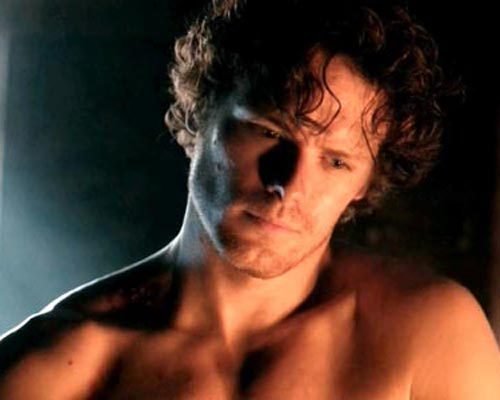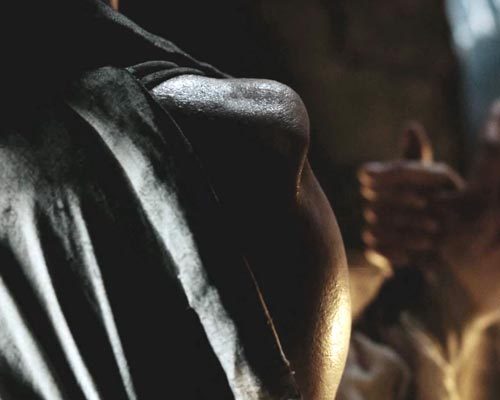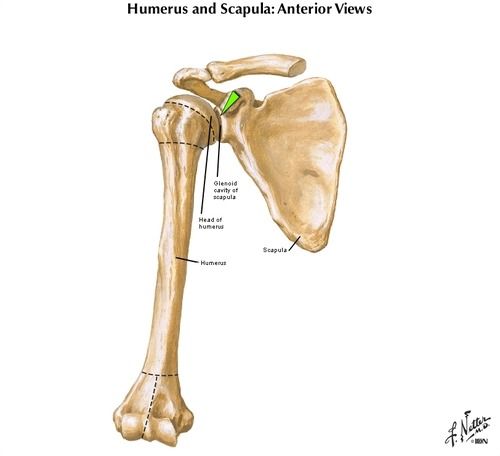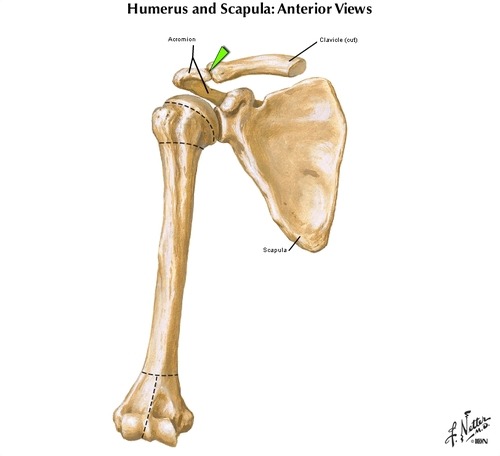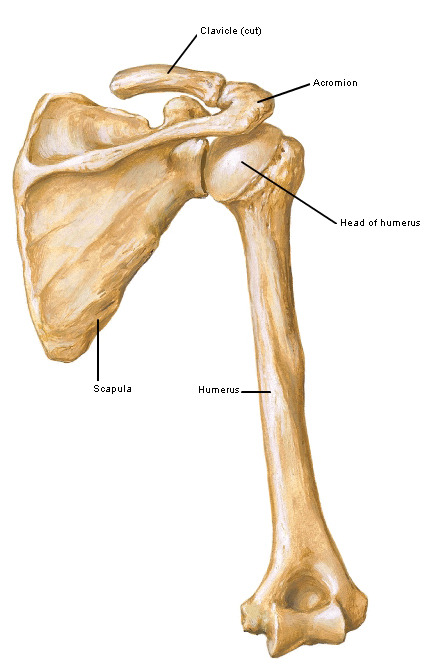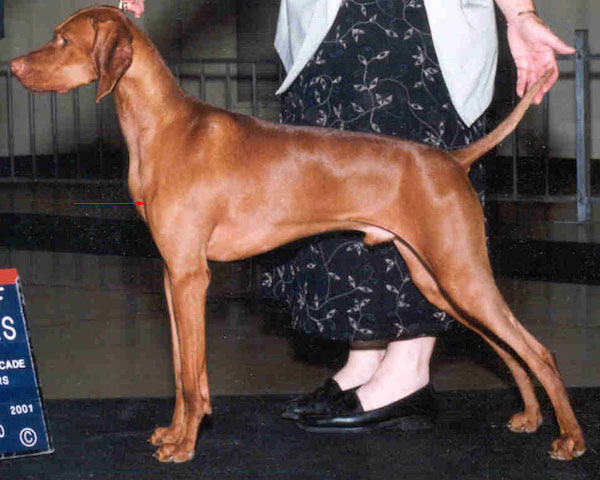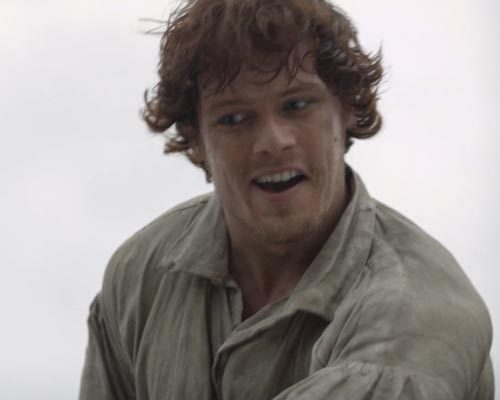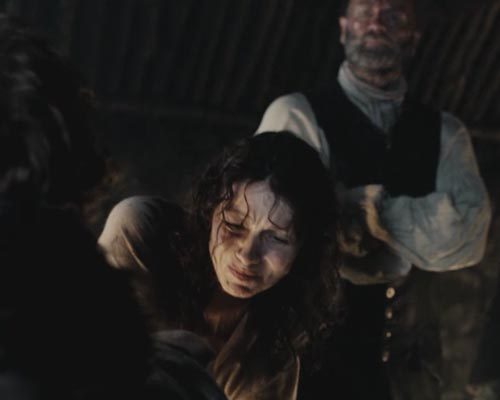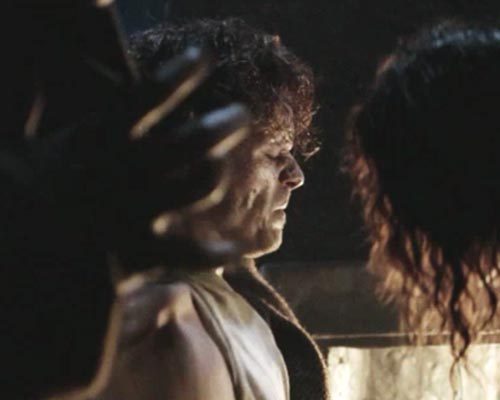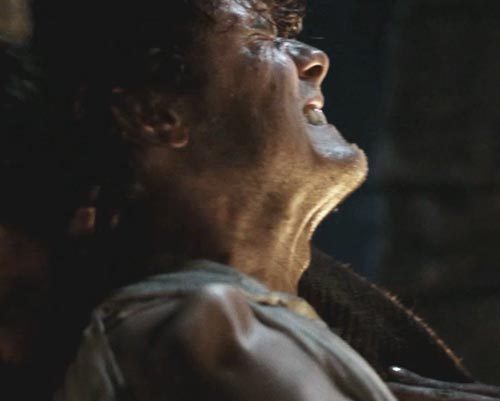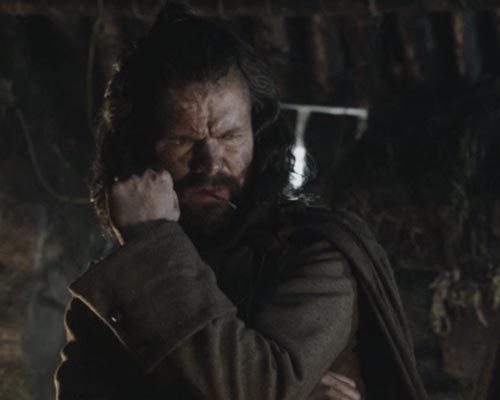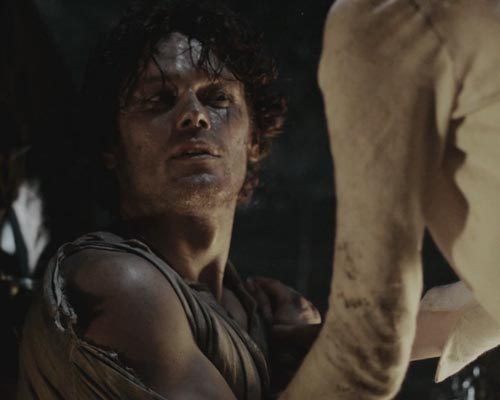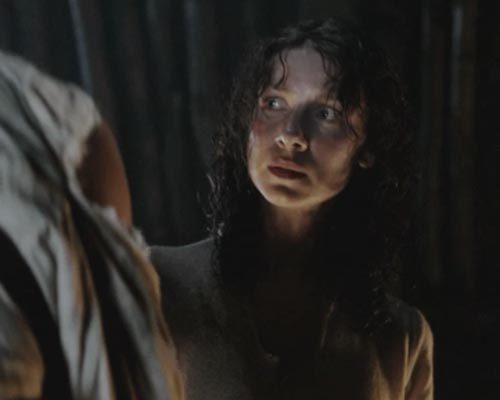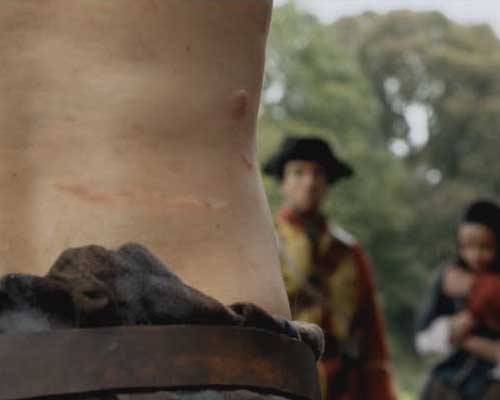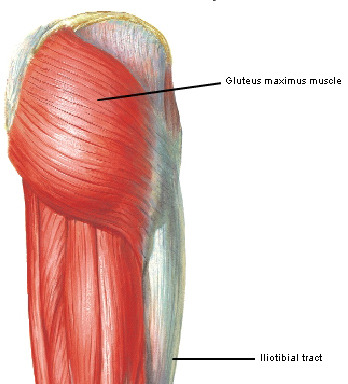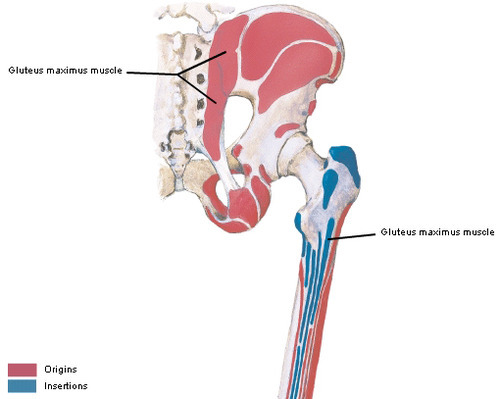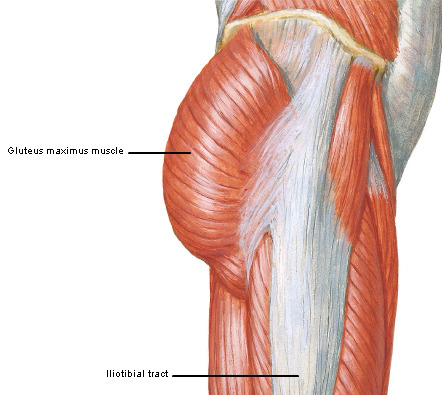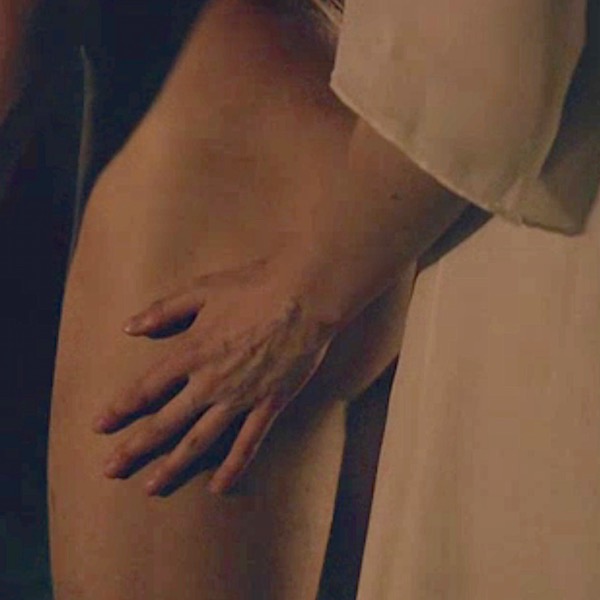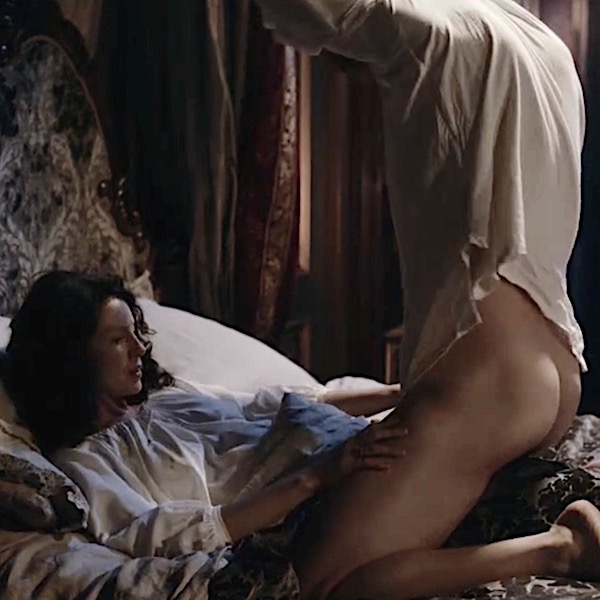Hallo, anatomy students! Anatomy Lesson #2 dealt with Jamie’s dislocated shoulder. Today’s Anatomy Lesson #3 delves deeper into the shoulder region. Why? Because Jamie’s bad-day blues continue with a gunshot wound to his already battered shoulder (Starz episode 1, Sassenach).
Take a wee peek at the lad’s bonny shoulders in Starz episode 5, Rent. Mo’ bettah? The shoulder is fully healed, thanks to Nurse Claire. Jamie is super unhappy here, as Uncle Dougal uses and abuses him for political expediency (some things never change. Hah!). Let’s see the damage done to his shoulder by the musket ball.
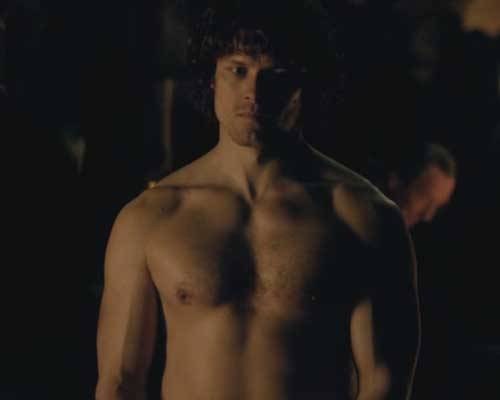
To understand Jamie’s gunshot wound, we must explore more shoulder anatomy:
Clavicle: Anatomy Lesson #2 introduced the paired clavicles (collar bones), each a strut holding its shoulder joint away from the torso. Here is how they works: each clavicle lies mostly horizontal at the top of the chest where its near (proximal) end attaches to sternum (breast bone) and its far (distal) end attaches to acromion (Image A – right side). Both ends are secured in place by ultra-strong ligaments.
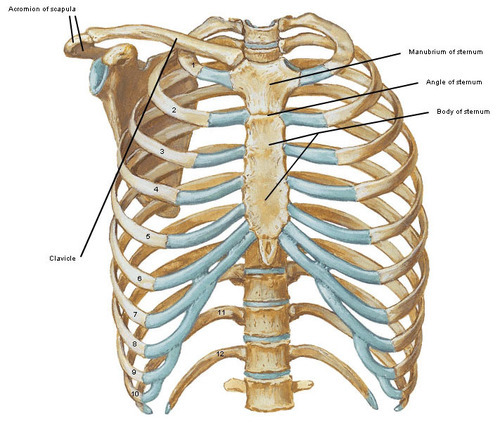
Image A
Firmly grounded to the torso via the sternum, the clavicles support most of the weight of our shoulders. If a clavicle breaks, then the shoulder joint droops and the patient presents supporting his/her injured side with the good hand. Here is a great example of a broken left clavicle in the form of wee Ferris Bueller (Image B). Oops, mea culpa, Mathew Broderick, not the charming high school con artist. BTW, this photo isn’t movie magic. In 2006, Matthew fell off a horse while riding in Ireland, breaking his clavicle!

Image B
Trapezius: The clavicle is also a landmark for reviewing the second injury to our “king of men!” Below the clavicle lies the chest, above it is the trapezius muscle, here seen overlaid with skin (Image C).

Image C
When the “Mad Bastard Randall” whipped JAMMF for defending his sister, Jenny (episode 2, Castle Leoch), both loverly clavicles are visible in an otherwise unloverly situ! Two flesh ridges are created by the clavicles as Jamie’s poor arms tied in place. Hurtful humiliation for the laird’s son!

Bad Day: Now, on to Jamie’s second owie of a verra bad day! You will recall the wee stramash with redcoats at Cocknammon Rock, where Jamie unceremoniously dumps Claire in the dirt, rips off his belt sling (och, that hurts!), and yells “hide yerself?” Course, ye do.
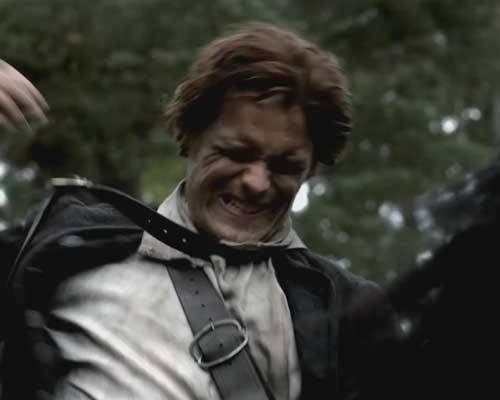
No Dummy: Being a smart sassy-lass, Claire immediately high tails it downstream where Jamie catches her up. Sliding off his steed (I’ll return to that splendid image in a future lesson), he cautiously approaches: sword drawn, arms extended, speaking gently – corralling her like one of his horses. Whoa, Nellie!
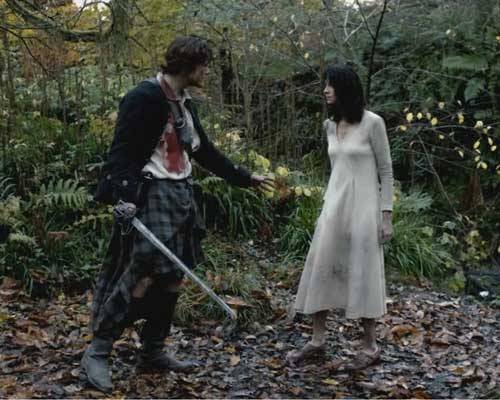
Claire’s Feign: Claire tries distracting Jamie from her aborted flight by changing the subject – she hopes he hasn’t been misusing that shoulder! Geeze, Claire, ya think? Jamie looks like mayhem – bloody, muddy, disheveled and in HIGH DUDGEON! But, her ploy isn’t gonna work on Jamie – the lad’s as bright as a ruddy sunbeam! Glancing at his shirt, Jamie dismisses the bloody mess as belonging mostly to the other guy.

Jamie warns Claire that she is coming with him because Dougal and his band of Merry Men are waiting further upstream. “You don’t look that heavy” he mutters cautiously creeping toward her – LIAR, LIAR Pants on Fire! In Outlander book, Jamie later tells Claire she weighs as much as a good draft horse <G>!
Feral cat that she is, Claire spits that she isn’t going with him. Just look at her face. You gonna make me?

Well, yeah, he is. Jamie warns she better get her sweet arse into that saddle or he is gonna pick her up and thrown her on it!
Now, Mistress Beauchamp, a wee word of advice: we all ken that ye are a braw and fearless lass who isn’t scairt to take a STAND but don’t bait the puir man in his present condition – battle causes Jamie to take his own kind of STAND! Ye ken? So, off they go…clip clop.
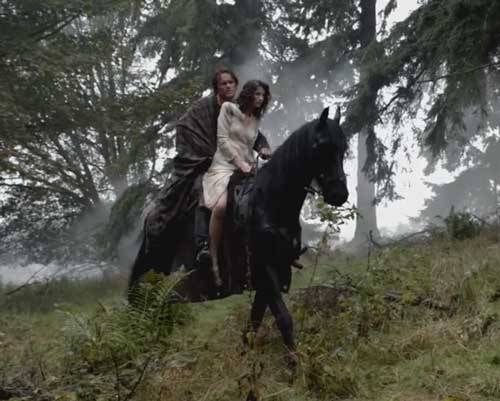
After nightfall, Claire yells “Help, he’s going over” and, having fainted, Jamie hits the ground with a mighty thud. Och, he is 6’4” and weighs 15 stone = 210 pounds!
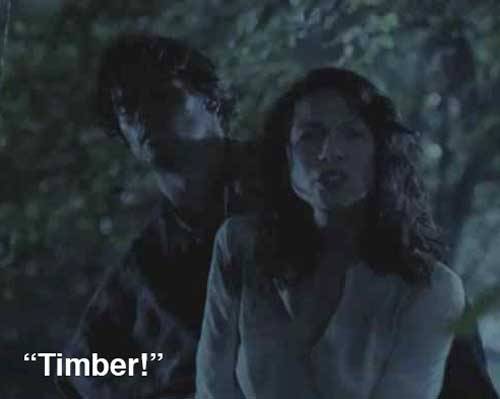
“Help me lift him up!” and “Come on!” our bossy nurse orders the highlanders as they pull his head and shoulders onto a small hillock.

STOP – time for a teaching moment!
Not wanting to create my own stramash, but, writers of Starz episode 101, Sassenach, got this one wrong: no nurse worth her/his grit would ever order the head of a fainted patient to be lifted above the level of the heart! NO WAY! Why? Well, a person faints because blood pressure to the brain falls below the level required for consciousness. So, a competent practitioner either raises the feet or lowers the head or both! Gravity then helps move blood back into the brain and if all goes well, consciousness is restored.
Now, giving credit where credit is due, Herself got it right in Outlander book where Claire orders the lads to put a saddle bag under Jamie’s feet, thus aiding blood flow from the lower body towards the head.
Moving on: Claire pulls aside Jamie’s shirt and quickly diagnoses a nasty gunshot wound. Ew! The shot went cleanly through the trapezius muscle just above the collar bone (In Outlander book, a bayonet does the dastardly deed), but either way, enough loss of blood that our tapaidh (brave) hero faints.
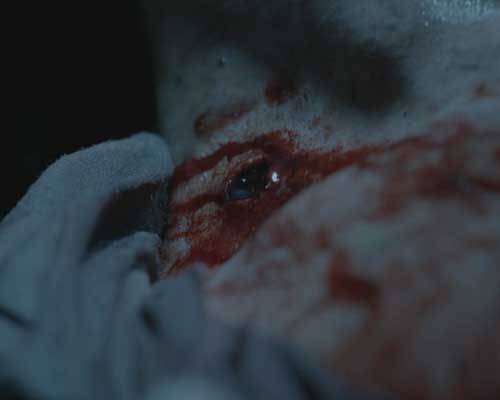
Claire promptly blasts the men with a list of required medicaments to treat the nasty wound but they’ve got nuthin’ ‘cept a cache of beloved whisky – no problemo!
Here ye go!
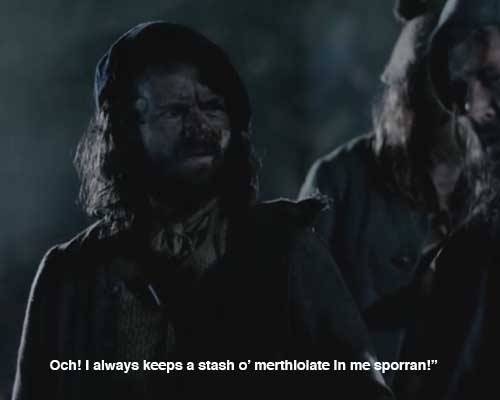
Now, back at triage, our BAD, SASSY LASSIE breaks into a litany of cussing and swearing and telling the men where they can stick their 18th century ideas (because, really, they’re no much help at all) and manages to even shock corn-grinding Uncle Dougal!
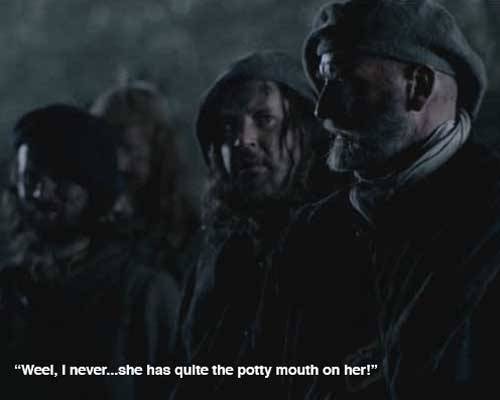
She none too gently rouses Jamie by pouring alcohol (yikes!) directly on his wound and then declares if he “so much as moves a muscle, she is going to bloody throttle him!”
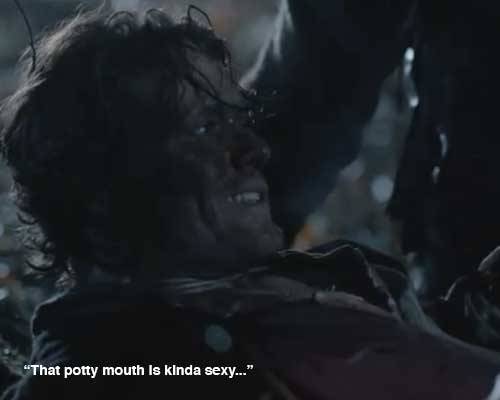
Our Sassynach later asks Jamie. “Does it hurt now?” as she deliberately tugs the dressing to make damn well sure it does hurt. Learn this lesson, Jamie: when Nurse Claire is on duty, you will take care of that bloody dislocation!
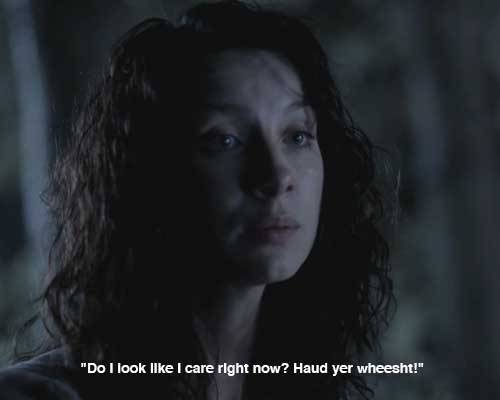
“Aye” mutters Jamie, but he’s really thinking…
tcha, she’s a feisty lass wit’ a tongue like an adder..but verra bonny!
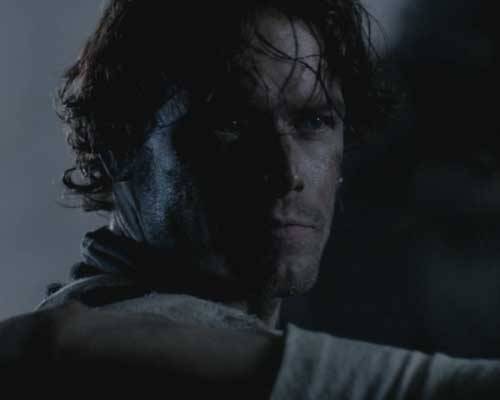
Now, just take a gander at the gleam in Jamie’s eyes during this whole scene! What was he thinking of this fierce feline? We learn in the Outlander book that he says to himself to himself says he:
“Jamie, lad, if her touch feels so bonny on your collarbone, imagine what it might feel the lower down…”
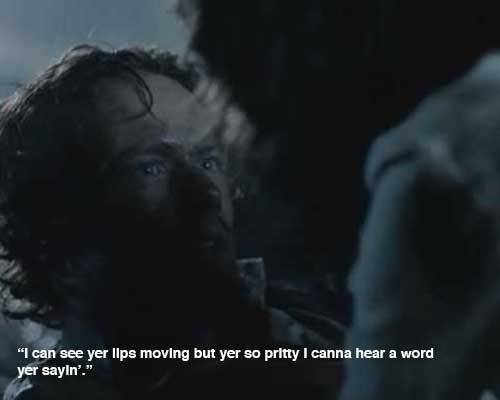
Trapezius: OK, the ball pierced the trapezius: what is the trapezius muscle and what is its purpose? The most superficial muscle of the back, each trapezius is large, flat, and shaped like a triangle with its base running from the back of the skull (green arrow in image D – left trapezius only) down the spine to the 12th thoracic vertebrae (T12). The muscle fibers then converge at the shoulder where they attach to scapula and clavicle. Together with its pair of the opposite side, the trapezii (pl.) create a 4-sided figure, hence the name trapezius (Greek meaning four-sided).

Image D
When viewed from the front the trapezius also forms the slope from neck to acromion (shoulder point). The green arrow in Image E marks the spot where the musket ball traversed Jamie’s right trapezius!
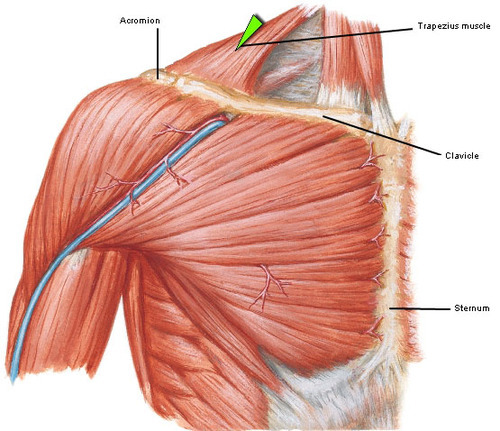
Image E
Understand that the shoulder is not fully functional without an intact trapezius because this powerful muscle lifts, depresses (pull downwards), retracts (pulls back) and rotates the scapula. A warrior could not be a warrior without a working trapezius! This is why Claire is soooo anxious to treat the wound properly and restore the trapezius to good health (because she is a nurse after all and her patient’s wellbeing comes first – never ye mind that she’s feeling a good deal more than just wellbeing for Jamie). Something’s cooking and it isn’t haggis!
So, Claire administers a field dressing using slip strips (pretty much all western women wore them in the 40’s) and off they go, again! They barely arrive at Castle Leoch (Starz, episode 2) ere her bonny fingers are again managing Jamie’s bonny collar bone and trapezius!
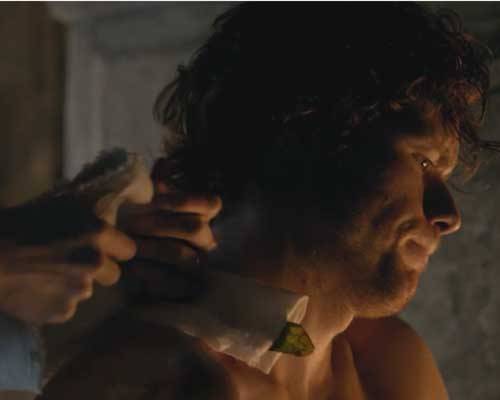
But, she purposefully hurts Jamie a second time by pulling his bandage so tight he can scarcely breathe (did you hear the linen strain?). Oooh, Mistress Beachamp…did he get too close for comfort, saying you are a kind woman with a good touch and old Frank was one damn lucky man? Don’t want him making any attachments or asking too many questions, aye? Must stay focused on the patient’s wellbeing and all that blatty-blah!

Now, a note of praise to the details crew of Starz episode 2, Castle Leoch… take a wee peek at Jamie’s shoulder as Claire removes the blanket covering his back. The exit wound is evident on the back of shoulder along with whiplash scars, but did you notice the ecchymosis (purple, blue, green and yellow discoloration) over the shoulder region (blue arrows)? This is mostly due to the dislocation and is absolutely realistic! But, as both wounds tear blood vessels, blood seeps into the soft tissue under the skin with the resultant mottled bruising. Nice job, folks! You hare redeemed for the fainting faux pas <g>.
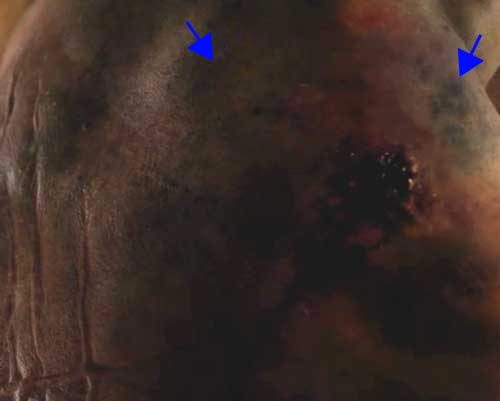
Lastly, I was delighted by Starz episode 7, The Wedding, where a faint scar from the gunshot wound can be seen just above Jamie’s right collar bone. Och! There goes MY blood pressure again!
Again, kudos to the detail people because most assuredly the scar should have been visible that soon after the injury.

End: Let’s end with a wee history lesson: do you know the University of Edinburgh, Scotland, produced many of the most famous physicians and anatomists of western medicine? One of the better known is John Hunter (1728-1793), who became personal surgeon to King George III.
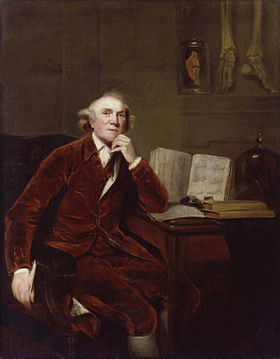
As a physician, he also revolutionized the treatment of gun shot wounds and made major advancements in the field of OB-GYN, bone growth, etc. As an anatomist, he amassed a collection of over 14,000 anatomical specimens, now housed in the Hunterian Museum at the Royal college of Surgeons of England, London. One of the specimens includes the skeleton of a 7’ 7” Irish giant by the name of Charles Byrne, showing that Herself was not off the mark by imagining a bonny, 6’ 4” Jamie!
Now, fare-thee-well to all of you until my next lesson. Take care of your own bonny clavicles and trapezii muscles!
Like you, I am counting down the days: 165 days until Starz Episode 9! Hang in there friends of Outlander Anatomy! United we STAND!
The deeply grateful,
Outlander Anatomist
All photos are credited to Starz or Frank Netter’s Atlas of Human Anatomy, 4th edition, except Ferris Bueller…I don’t know who took that picture but credit goes to the photographer who did back in 2006.

